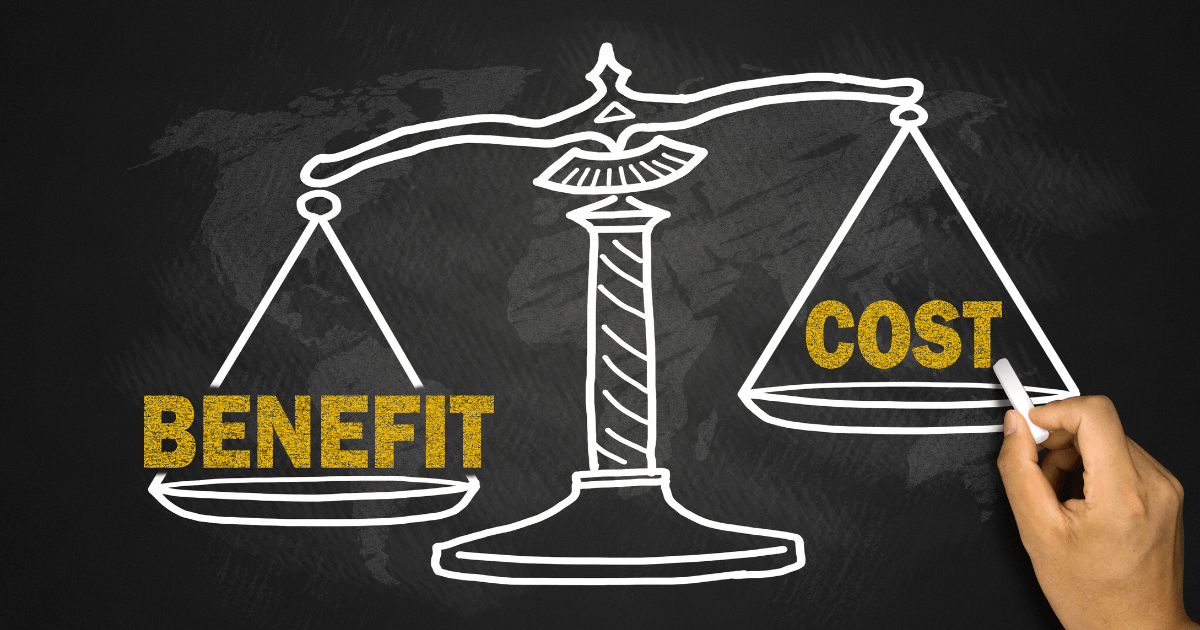Have you ever looked at your hourly rate and thought, “Wow, that’s a lot of money?” Now imagine that feeling from the perspective of a potential client, who might be living paycheck to paycheck.
It’s no secret there’s a big difference between even the lowest paid lawyers’ hourly rate and what most Americans earn per hour. It’s crucial to keep this gap in mind as you talk with legal leads. Because when you empathize with a client’s financial reality, you’re better equipped to help them understand the value of – and agree to pay – your professional fees.
Clients who perceive legal fees as “too expensive”, based on comparison with their own income, are thinking about things the wrong way. You have the opportunity (and arguably, responsibility) to help them understand this so they can overcome their own misguided objections and invest in the legal help they need.
This article explains how you can, through your complimentary consultation, educate potential clients so they can perceive the even greater value they receive when they pay for your legal expertise and services.
Start With the Client’s Financial Point of View
Your hourly rate may be standard across the board, but for many potential clients, legal fees come as a huge shock. And the contrast between the amount you charge per hour and what most people earn for an hourly wage can seem like “highway robbery.” It’s not the truth, but it is a perception you will come across frequently.
So let’s dive into how to work with that perception.
First, imagine you’re the one facing a life-altering legal issue, a mountain of incomprehensible paperwork, and looming deadlines. You desperately need an expert to navigate the labyrinth, but every lawyer you contact seems impossible to reach. The few who do get back to you require hundreds of dollars before you can ask a single question.
Now imagine you’re an average working American. As of March 2024, you earn less than $12 an hour and rent is $1300. You work 40 hours a week, and still wind up with only $620 a month for food and other essential purchases. If the lawyer you speak with charges an hourly rate of $250, not only does just one hour of their time devour the equivalent of a full workday for you, you most likely cannot conceive of how ANYONE could possibly afford legal help.

No wonder people hold stereotypes about “greedy” lawyers. Which, honestly, is something important to keep in mind during your first conversation with a new potential client. Most of them are very uneasy about talking with an attorney because they are afraid of what it will cost.
Gender and race wage gaps further complicate the situation. Women typically earn 84% of what men do, and Black or African American women earn an average of $889 per week, which is a fraction of what some lawyers charge per hour.
On top of all this, wages haven’t kept pace with inflation. Especially between 2021 and 2022, when inflation peaked at a staggering 9.1%. The cost of everyday necessities has greatly increased in a short period of time, squeezing budgets and making legal fees seem like an even more daunting expense than in the recent past.
There is a way to bridge the gap between your fees and client financial constraints. And when you do this effectively, it can relieve client fears and help them say yes to hiring you – even if they make far less than you.

Shifting the Focus: From Cost to Value
Understanding the financial realities of most legal leads is crucial. Because when you start from a place of empathizing with their limited resources, you can approach them with compassion and kindness to highlight the long-term value of your expertise which opens their minds to your hourly rate.
You can also help them understand that legal fees are exchanged for more than just the time you spend actively working on their case. It’s about the expertise you’ve achieved that they do not have to spend time gaining for themselves.
There’s an old homily about The Handyman’s Fees that helps illustrate the difference between the value of an action and of the knowledge behind the action. It’s told in many different ways and using different dollar amounts, but the punchline is this. When asked to explain his $10,000 invoice given that he only tapped a hammer for a few minutes, the handyman submitted an itemized version with two lines:
- Tapping with a hammer: $2.00
- Knowing where to tap: $9998.00
If the client had to solve their legal problem without your expertise, they might have no idea where to even begin.
Which brings us to the real value potential clients may overlook if they are solely focused on hourly rates. Not only are they investing in the expertise you have earned over a long period of time and with great effort, but they are buying something far bigger than your time. They’re investing in an outcome.

Your expertise can help them navigate complex legal issues, secure desired results, and achieve peace of mind. When compared to the potential losses they could face without your guidance, the hourly rate becomes a small price to pay.
For example, with a client who is facing a contract dispute, the cost of a few hours of working with you could prevent a costly lawsuit and save them tens of thousands. Similarly, a family law attorney’s guidance during a divorce might seem expensive upfront, but it ensures a fair and efficient resolution, protecting their assets and future well-being. When you focus your initial consultation on the positive outcomes you stand to deliver as well as the worrisome costs you could help them avoid, it shifts the conversation from hourly rate to the value provided by your services.
Clients aren’t really paying for your time; they’re investing in your problem-solving expertise and the expert solutions you bring to the table. So instead of focusing on hours spent, focus on the value you deliver.
Communicating Value in Action
Transforming the value proposition of your legal services into tangible actions starts with open communication at the very first client meeting. Instead of shrouding fees in mystery, be upfront and transparent about your hourly rate and potential costs associated with the case.
However, the conversation shouldn’t end there. Take the time to understand your client’s specific needs and budget concerns. This allows you to demonstrate your value proposition in action. Explain how your expertise can prevent costly legal missteps down the road, saving them money in the long run.
Beyond hourly billing, you might explore alternative fee structures that cater to different needs. For specific, well-defined tasks, consider offering flat fees and providing clients with upfront certainty about the total cost. For longer-term engagements, you might discuss flexible payment plans, which can make legal representation more accessible. A willingness to work with them financially (not by lowering your compensation, but by restructuring it) can demonstrate your commitment to working within their budget while ensuring access to your expertise.
As you communicate the positive outcomes your expertise can help them achieve, be sure to also compassionately educate your potential clients about what can happen if they decide to handle the legal matter on their own. Clients who are worried about hourly fees may not have considered how much more they might ultimately pay if they don’t have your guidance to navigate their legal journey.
Most clients have little experience with the legal system and no idea how easy it is to waste precious time and resources moving in the wrong direction. Without legal expertise, they risk missing key deadlines, filing paperwork incorrectly, or even jeopardizing their case altogether.
These mistakes can translate into unnecessary court appearances, financial penalties, and potentially starting the entire process over, which can cost much more than securing legal guidance in the first place.

Win-Win Situation
By effectively communicating the value of your services, you can help bridge the gap between your expert-level fees and your client’s financial constraints. Shifting the focus from hourly rates to the positive outcomes you deliver fosters trust and can help offset the perception of lawyers as “sharks.”
Clients are understandably wary of high fees. Use empathy, kindness, and communication skills to educate them – not just about the cost but the immense value they receive in return (in both positive outcomes and avoidance of negative outcomes). Explain how your experience and expertise is designed to save them time and money, prevent costly mistakes, and escort them smoothly through complex legal labyrinths.
Remember, they are not buying your time. They are investing in the security and peace of mind that come with expert representation and experienced support for their legal journey.

